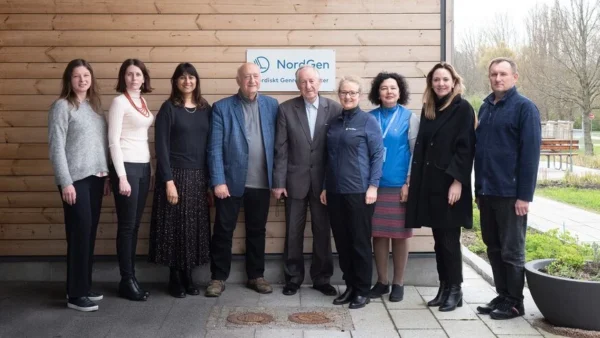As agriculture and farming have relied more heavily on scientific breakthroughs to make improvements to animal care, land and water management and the environment, society has become increasingly illiterate in this area. The consequences of which are fatal.
We all know that agriculture has been misunderstood for some time now, be it due to plain ignorance or the intentional spread of misinformation from agenda-driven organizations. Having been a part of the less than 2 percent of the population that’s directly involved in farming, this is a frustrating challenge, to say the least.
I was one of those kids who snuck baby pigs out of my dad’s barn and kept them under my bed until my mom came to say our goodnight prayers and heard the shuffling beneath and insisted they be returned to their mommas.
In the 80s and 90s, I witnessed, and was a part of, the change going from feeding the breeding hogs outside on cement slabs with 5-gallon buckets that we hauled in the back of an old Ford to moving all our animals inside. Several buildings were erected, and the rooms where the animals were kept were climate controlled, set at a temperature most suitable for their age. If the temperature changes from a set zone, alarms go off. All the pigs have unlimited access to clean water at all hours and are given a specially formulated diet that is augured into their feeder morning and evening, by flipping a few switches.
I spent a ton of time in those barns processing piglets, vaccinating pigs, feeding, checking and moving pigs and keeping records. So, as I listen to the conversations around animal welfare and well-being, it’s counter-intuitive for me to move them back outside — even though there’s a tremendous market for pasture-raised pork. The science shows inside production is not only easier and more manageable for farmers, but also better for the animals.
Similarly, there’s a contradiction between production methods on the plant side of things. For decades, researchers and plant breeders have used traditional plant breeding, physically crossing two parent plants and then waiting to analyze the characteristics of their offspring. This method takes time to conduct the grow-outs and then do a phenotypic analysis. Farmers planted seeds at increased populations rates, knowing that some seed might not germinate, and fertilizers and crop protectants were applied evenly across fields.
Today, the landscape of plant breeding and farming looks very different. Through science, researchers and plant breeders now have access to genomic data, which allows new breeding techniques to be used. Combined with other scientific advances, these new breeding techniques will allow plant breeders and researchers to bring more new products to market with increased variability in the value they deliver both farmers and consumers. Most of these new techniques allow researchers to change the genetic makeup just as nature would through evolution, only much faster and with much greater accuracy.
Yet some groups want to see products derived from these new breeding techniques regulated in the same way as GMOs. Science tells us, this just doesn’t make sense.
Thousands of studies have proven that GMOs are safe. One of the most recent studies even reported that products produced from GMOs are safer than their counterparts, because they require fewer chemicals be applied to the actual plant.
Farmers now take soil samples and practice variable-rate applications of fertilizers, insecticides and herbicides. Seeding rates have decreased as every seed planted is expected to germinate. Whether they know it or not, farmers are scientists. They are collecting thousands of data points, analyzing them and making decisions — each new crop is a new experiment with new variables.
So, Where’s the Disconnect?
According to new studies, it’s not just agriculture that is misunderstood; it’s the whole premise of science as it relates to our everyday lives.
3M recently commissioned surveys in 14 different countries, including both developed and developing economies, and each country had a sample size of roughly 1,000 individuals. Countries included Canada, France, Germany, Japan, Singapore, United Kingdom, United States, Brazil, China, India, Mexico, Poland, Saudi Arabia and South Africa.
John Timmer, a science editor with ARS Technica, was given a chance to look at the study and reported his findings in the article “Survey: Most people don’t understand science, want their kids to do it.”
“Despite the cultural differences, people consistently feel that science has an overall positive impact on global society, and they’re excited by what we learn,” Timmer wrote. “But buried in the positives are a few areas of concern.
“Most people don’t recognize the impact that science has had on their daily lives and view it as something their kids might be involved with. Yet younger people are more likely to view themselves as skeptical of science and not trusting of what scientists have discovered.”
Furthermore, Timmer points out that kids are often into what their parents are into. This alone doesn’t bode well for the future of science.
If you’ve not read the article, I highly encourage you to check it out: https://arstechnica.com/science/2018/03/survey-most-people-dont-understand-science-want-their-kids-to-do-it/.
This is just general science. Couple that notion with the research around agricultural science, and there’s reason for alarm. In a study released today, March 20, more than 80 percent of high school science teachers surveyed think agricultural science is important, but only 22 percent say it makes up at least some of their lesson plans.
The survey, sponsored by Bayer in collaboration with National 4-H Council, found that fewer than half of the teachers surveyed felt qualified to teach agri-science. Some 48 percent believe there is less emphasis placed on learning this particular science, technology, engineering and math (STEM) industry today as compared to 15 years ago.
Additionally, more than 1,000 parents of high school students were surveyed, of which 86 percent agreed that it’s important for the country’s future success to encourage pursuit of careers in agriculture. However, nearly 70 percent of respondents don’t believe their children will pursue a career in agri-science, even though data from the U.S. Department of Agriculture shows tens-of-thousands of jobs each year in agriculture go unfilled by qualified candidates.
In fact, a study published by USDA and Purdue University reports that about 58,000 jobs are likely to open each year in food and agriculture through 2020. The strongest demand is for STEM dependent jobs such as plant scientists, water-resource scientists and engineers and precision ag specialists, among other positions.
So how do we, as part of the broader ag community, promote not only a better understanding of science but careers in agri-science?
A number of companies are working to address this challenge. Bayer launched its Science Matters campaign in August 2017. Monsanto has a number of initiatives it supports including the FIRST Robotics Competition; the Feed, Nourish, Thrive Campaign; Planet Forward and Net Impact. Dow AgroSciences, now a part of DowDuPont, also supported a number of activities related to STEM education. One endeavor that I got to witness in person was a hands-on plant science experiment at the Indianapolis Children’s Museum. Syngenta, too, has a number of efforts. One of its most recent initiatives is a science fellowship for high school teachers. DuPont has invested in My American Farm, free online games designed for students in grades K-5 to help learn math, reading, science and social studies skills in the context of agriculture.
Meanwhile, there are external initiatives, such as Ag in the Classroom, First-the Seed Foundation and many more, supported by organizations and companies designed to take ag science and seed science to classrooms.
As I think about this challenge and its future impact on our local communities, zoning ordinances, state and federal laws, and society as a whole, it’s arguably an even bigger, and more important, challenge than that of feeding 9.5 billion people by 2050 — which requires science.
To me, there’s no better illustration of this than what’s happening right here in Missouri (and in many other states). There’s this family-startup which purchased their first cows in the early 90s as part of a 4-H project. To make a long story short, this 4-H project has turned into a progressive cattle company that’s looking to grow herd numbers and process the cattle on site.
But the spread of inaccurate information and fear from neighbors about what this means for the local community has led to violence, protests and death threats against this family. I personally toured this farm and cattle facility, as well as the new processing area being built, and this family is an example of ag stewardship at its best. If only a basic understanding of science, farming and agriculture would prevail. This is a local family, supplying local meat — just what consumers say they want.
Will society’s dismissal of science and laziness in seeking answers about farming and agriculture hinder our ability to feed the world? I hate to be pessimistic; but the erosion of science is suicide, and I mean that quite literally — one in six people in America face hunger, and around the world more than one in five children are at risk of hunger. Simply put: Denying science will mean more empty plates around the world.
Let me know your thoughts and ideas on how we might tackle one of the most important challenges of our time. You can post comments below or email me at jdeering@issuesink.com.













